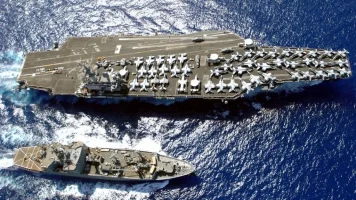- Views: 2K
- Replies: 21
The Indian Navy is taking significant steps to bolster its amphibious warfare capabilities with the planned acquisition of four new Landing Platform Docks (LPDs). These versatile vessels are envisioned to be crucial assets for a range of operations, from amphibious assaults and troop deployments to disaster relief efforts and humanitarian missions.
While the Indian Navy is keen to enhance its capabilities, a key decision remains: whether to pursue an entirely indigenous design or to collaborate with foreign partners for these critical platforms.
In 2021, the Ministry of Defence (MoD) released a Request for Information (RFI) for the procurement of four LPDs, specifically designed to be built by Indian shipyards. However, recognizing the complexity of these vessels, the RFI allows Indian shipyards to partner with foreign defense companies for design and technology assistance. This approach aligns with India's broader push for self-reliance in defense manufacturing while acknowledging the value of international collaboration.
Two major Indian shipyards have emerged as frontrunners in this competition, each with a foreign partner:
- Hindustan Shipyard Limited (HSL) has partnered with France's Naval Group, a company with extensive experience in designing and building amphibious warfare vessels. This partnership brings significant expertise to HSL's bid.
- Larsen & Toubro (L&T) has teamed up with Spain's Navantia, proposing a variant of the Juan Carlos I, a highly capable and versatile LPD currently in service with the Spanish Navy and other international fleets.
A final decision on the design and production pathway is expected soon, marking a critical step in the Indian Navy's modernization efforts. Whether through a fully indigenous design or a foreign partnership, the LPD program promises to significantly enhance India's amphibious capabilities and overall operational readiness. These new vessels will be instrumental in projecting India's naval power and supporting its strategic interests in the region and beyond.

